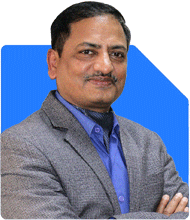
Dear Sir,
I am 62 years old retired person investing MF since 2010. and my MF investments are as follows:
Total Investments: 20.58L, Corpus- 41.78, XIRR-14.41%.
Details of Investment:
1. SBI Contra Regular: Investments from 2010 to 2024, presently suspended.
Invest. amount- 4.83L, Corpus-19.02L, XIRR-17.3%.
Present SIP- 50K since 3-4 years
1. Parag Parikh Flexi cap, direct - 10K
2. HDFC Balanced Advantage, direct- 20K
3. HDFC Retirement Saving, direct - 5K
4. Navi Nifty 50 Index, direct - 5K
5. Kotak Nifty Next 50 Index- 5K
6. Motilal Oswal Nifty 500 Momentum 50, direct -5K,
Time horizon- my whole life
I am planning to withdraw 10% of corpus from SBI Contra Regular and invest in Flexi Cap/ Balance advantage Funds.
I have sufficient amount in FD, Post Office SCCS, PO MIS, LIC Ret. Pension, SBI Life Pension, NPS and EPF Higher Pension which will take care of my expenses. Also have health insurance.
My children are married and working.
My investment objective is to gift these investments to my son and daughter.
Please suggest your views on portfolios.
With Thanks & Regards,
S. Salvankar
Ans: I appreciate your dedication to investing since 2010 and your clear goal to gift these investments to your children. Let’s assess your portfolio and offer a 360-degree review.
Your Current Investment Picture
You have Rs 20.58 lakhs invested in mutual funds.
Your corpus is Rs 41.78 lakhs now.
Your overall XIRR is 14.41%, which is very good.
You have a good mix of SIPs and lumpsum investments.
You have also diversified across different mutual fund types.
Your regular SIP of Rs 50,000 shows your disciplined approach.
Your Other Savings and Financial Security
You have enough in FD, Post Office SCCS, PO MIS, LIC Pension, SBI Life Pension, NPS, and EPF Higher Pension.
These sources will cover your living expenses and medical needs.
You have health insurance to take care of future health costs.
Your children are settled and financially secure.
This lets you take a long-term view for your mutual fund investments.
Portfolio Evaluation and Insights
Your portfolio has grown steadily over the years.
Your best-performing investment is in SBI Contra Regular, with 17.3% XIRR.
You are considering withdrawing 10% of SBI Contra Regular to invest in Flexi Cap / Balanced Advantage Funds.
You also have direct mutual fund schemes in your portfolio.
Let’s now analyse these areas in detail.
Direct Mutual Funds vs Regular Funds
You hold direct mutual funds.
Direct funds need your own time and knowledge to manage well.
They don’t give you personal guidance or review of your portfolio.
Market situations change, and rebalancing needs to be done.
If you invest through regular funds via a Mutual Fund Distributor (MFD) with a Certified Financial Planner (CFP) credential, you get continuous help and monitoring.
The CFP’s insights will help you with tax planning, rebalancing, and goal-based investing.
Direct funds don’t give you this personal, professional support.
Hence, I suggest you consider switching your direct funds to regular funds with the support of an MFD and a CFP.
Disadvantages of Index Funds
Your portfolio has index funds like Navi Nifty 50 Index, Kotak Nifty Next 50 Index, and Motilal Oswal Nifty 500 Momentum 50.
Index funds just copy the index.
They do not beat the market. They only match it.
During market crashes, index funds fall without protection.
Actively managed funds have a professional fund manager.
They use in-depth research to try to outperform the market.
These funds can manage risk better in bad markets.
Actively managed funds also use tactical asset allocation to protect your money.
For your long-term family gifting goals, actively managed funds are better.
Your Withdrawal Plan
You plan to withdraw 10% of SBI Contra Regular and invest in Flexi Cap / Balanced Advantage Funds.
This is a good plan as you are taking out some profit and putting it in diversified funds.
Flexi Cap Funds and Balanced Advantage Funds are managed actively.
They will give you better risk management.
This will also help you reduce concentration risk in your portfolio.
Keep this 10% withdrawal as a staggered plan.
Don’t do it all at once.
Spread it over a few months to average out market ups and downs.
Suggested Approach for Your Portfolio
Keep your core portfolio in actively managed diversified funds.
Continue your SIP in actively managed funds for long-term growth.
Slowly reduce your exposure to index funds over time.
Move money from index funds to actively managed funds.
Balanced Advantage Funds are good to balance equity and debt.
Flexi Cap Funds are good for flexibility across large, mid, and small caps.
You can keep a mix of Flexi Cap Funds and Balanced Advantage Funds.
They will help reduce risk and improve returns.
Asset Allocation Review
Even though you are financially secure, asset allocation is still key.
Maintain a healthy balance between equity and debt.
This ensures that if the market goes down, you are protected.
If your equity allocation is above 60%, bring it down to around 50-55% gradually.
Keep the rest in balanced advantage or conservative hybrid funds.
This keeps your investments stable and growing.
Tax Planning for Mutual Funds
You are likely to withdraw some money from SBI Contra Fund.
Remember, as per the new rules, for equity mutual funds, LTCG above Rs 1.25 lakh is taxed at 12.5%.
Short-term capital gains are taxed at 20%.
You may want to stagger your withdrawals to keep gains below Rs 1.25 lakh each financial year.
This will help reduce your tax liability.
A CFP can help you plan these staggered withdrawals better.
Estate and Gifting Planning
You want to gift your investments to your children.
This is a thoughtful and loving gesture.
For gifting, you can keep your investments in your own name.
When you pass away, the investments will go to your children as per your nomination.
It’s good to update your mutual fund nominations.
Also, create a simple Will to say who will get which investment.
This will make it easy for your children to claim them later.
If you want, you can make joint holding in mutual funds with your children.
Joint holding makes the transition smoother.
Discuss this with a lawyer or CFP if you need guidance.
Review of Other Investments
Your FD, Post Office SCCS, PO MIS, LIC Pension, SBI Life Pension, NPS and EPF Higher Pension give you a strong foundation.
They ensure you don’t need to worry about regular cash flow.
You can keep them as they are for safety and steady income.
They will also help in emergencies.
Health Insurance and Emergency Corpus
You already have health insurance, which is very good.
Keep reviewing your health cover every 2-3 years.
If medical costs go up, top up your health cover.
Keep an emergency fund equal to at least 12 months of your expenses in a safe place.
This gives you peace of mind and stability.
Periodic Portfolio Review
Even if you don’t need this money, it is good to review your portfolio every year.
See if your funds are doing well.
If any fund is not performing well for 2-3 years, consider moving to a better fund.
Don’t chase short-term performance.
Focus on steady and consistent growth.
Role of a Certified Financial Planner
Your investments are for your children’s future.
A CFP will help you plan this carefully.
A CFP will guide you on estate planning, nomination, and taxes.
A CFP will give you an unbiased view and ongoing monitoring.
This personal guidance is very valuable as market and rules keep changing.
Avoid Insurance-Cum-Investment Products
You mentioned LIC Retirement Pension, SBI Life Pension, NPS.
These are fine for basic retirement security.
But in future, avoid investing in insurance-cum-investment products like ULIPs.
They have high charges and low returns.
Mutual funds are more transparent and flexible.
Finally
Your portfolio is strong and well planned.
Your disciplined SIP approach is very good.
Switching direct funds to regular funds with CFP support will give you better management.
Reducing index funds and focusing on active funds will improve your returns.
Keep your estate planning up to date with nominations and a Will.
Don’t worry about short-term market changes.
Your children will benefit from your patient and thoughtful investing.
Keep learning and reviewing your investments with a CFP to keep them future-ready.
If you need help with switching your direct funds or making an estate plan, let me know.
Best Regards,
K. Ramalingam, MBA, CFP,
Chief Financial Planner,
www.holisticinvestment.in
https://www.youtube.com/@HolisticInvestment



























